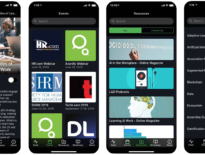“We have to build a culture of learning. “
Executives Everywhere Recently
Building a learning culture is suddenly an in-vogue topic in business conversation. Of course, this has something L&D pros have been clamoring about for years. But now, executives from across the business are seeing the connection between learning and business execution. Organizations have to grow and evolve to remain competitive and avoid disruption. That means people need to continuously learn so they can meet the changing requirements of their roles. This can only be a good thing for L&D, right?

Well … there’s one glaring issue with the trendy idea of building a learning culture. Every company already has a learning culture – whether they realize it or not. In many cases, this culture has been deprioritized or downright ignored for a long, long time. Therefore, the discussion should not be focused on “building” a learning culture. Instead, the focus should be on overcoming past missteps in order to raise the perceived value of learning and make it the real differentiator it should be.
But culture conversations tend to get fluffy. Companies write new mission statements. Values posters get hung on conference room walls. They rarely land on real-world, persistent practices that can enable and sustain the desired culture. So until you get practical, you can’t correct the way your organization learns.
Every company culture is unique. So the same practices won’t work for everyone. However, as I explored this concept and examined organizations that seem to get learning right, a few things stood out. Great learning cultures may become great learning cultures in unique ways, but I noticed five specific elements that were always in play.
SPOILER ALERT: Technology, training programs and content catalogs are not indicators of a great learning culture.
Balance
Many organizations forsake long-term employee skill development in order to chase short-term performance priorities – or vice-versa. Great learning cultures are able to maintain a balance. They provide the support people need to do their best work today while also providing opportunities for them to develop the knowledge and skills they will need in the future.
Companies with great learning cultures don’t let people get bogged down by everyday problems that can distract from continued development and long-term goals. Instead, they quickly stomp out those issues to help people stay focused on more meaningful working and learning experiences.
Alignment
In a great learning culture, everyone moves in the same direction. They may do very different jobs, but they share common goals and – more importantly – a sense of how work needs to get done. This often happens naturally in small organizations (ex: agility commonly found in startups) but can require dedicated effort in a larger, more complex company.
Alignment is not attained through executive mandate or rigid goal setting processes. These practices just take up time and frustrate employees. They also cannot flex and evolve as the company shifts priorities in order to remain competitive. Instead, alignment is earned through open and ongoing communication. For example, people are told the decision AND the whys behind it. Failure is acknowledged and discussed. Employees have access to experts and are not subject to communication cascades and reinterpreted priorities.
Sharing
People learn from one another in the workplace. This is just the way things work. However, in a great learning culture, this is appreciated and enabled. These organizations install practices and channels to help information move quickly and freely between those who know and those who need. They are not discouraged by concerns about what people “might do” if given the chance to share.
Great learning cultures also elevate their subject matter experts – regardless of role or title. They acknowledge that people across the organization possess great knowledge, are willing to share and have a desire to help their peers (not the company). These people are enabled to share as part of their work, not through extra steps, stretch assignments or complicated processes.
Feedback
To learn and improve their performance, people need to understand:
- what’s expected of them
- how they’re doing today
- what they need to do to get better tomorrow
In great learning cultures, this is clear all the time. People don’t have to wait for an annual performance review to figure out how they’re doing. From systems to training experiences to management, feedback is timely, meaningful and appreciated. Feedback is an expected part of the work.
Time
To really focus on developing their knowledge and skills, employees need one thing – and it’s not technology or content. It’s time. Sure, people learn a lot just by doing the work, but they don’t learn everything they need in their typical day-to-day. They need dedicated time to focus on identifying their performance gaps and refining the skills that will take them to the next level.
But the modern workplace is time-poor. Or at least it is perceived in this way, like when people constantly bemoan being “back-to-back all day” even though they control their own schedule. And it is true that employees, especially those working on the frontlines, do not have the time to step away from their work on a regular basis for training. But, in reality, everyone has 5 minutes in their day. There are also plenty of other time-wasting work activities that can be deprioritized in favor of development. Time is the best way to demonstrate that learning is a real priority within an organization. But L&D must evolve to fit learning and support solutions within the time people regularly have available to make this work.
Balance. Alignment. Sharing. Feedback. Time. Companies with great learning cultures consistently demonstrate these 5 elements. They aren’t posted on walls. The terms aren’t memorized during new hire orientation. They are embedded in the way the organization goes about its work.
In the end, learning isn’t something that becomes ingrained in your company culture just because it’s included in your mission statement. Real-world, tangible effort is required to foster the type of learning culture that can differentiate your company, engage employees and drive long-term, measurable business success.



